“Chicago Comics: 1960s to Now” at Chicago’s Museum of Contemporary Art from June 19 to Oct. 3, 2021, is intended as “a celebration of Chicago’s pivotal role as a national and innovative center for comics and cartooning.” Organized by New York-based comic historian and curator-at-large for Dan Nadel from an idea by former MCA Chief Curator Michael Darling, it surveys comics produced in the Windy City over the past six decades.
The show is primarily a parade of individuals, from Chester Gould and Dale Messick to Jay Lynch and Skip Williamson to Chris Ware and Lynda Barry to Nick Drnaso and Bianca Xunise. A highlight is how the exhibition foregrounds a number of Black artists who’ve often been ignored by the white comics and art worlds—like Tom Floyd, Seitu Hayden, Charles Johnson, Turtel Onli.
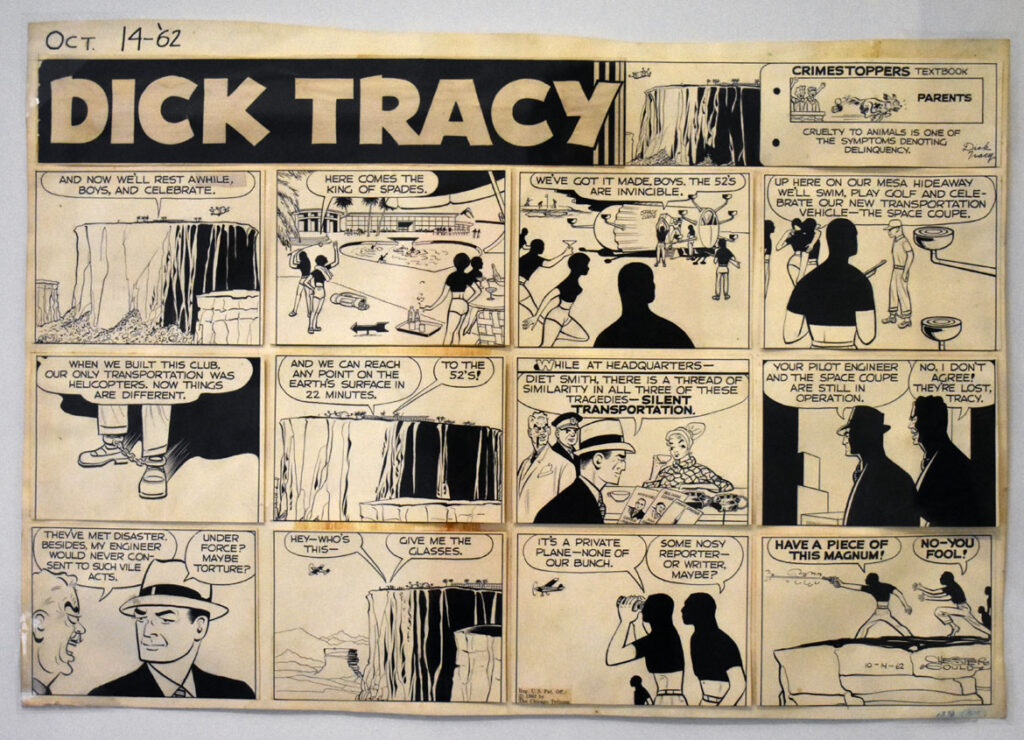
“Chicago Comics” begins in the 1960s, with the iconic “Dick Tracy” by Chester Gould and “Brenda Starr” by Dale Messick. They had been published in the Chicago Tribune for decades by that point, but serve as foundational influences because of their prominence and graphic style. Meanwhile Black newspapers Chicago Defender and Pittsburgh Courier continued to publish adventure comics and slices of life by Jackie Ormes and Jay Jackson, “whose heydays of racial critique were the 1940s and ‘50s.”
The civil rights movement and other social changes of the decade sparked new approaches—and underground press comics that spoke of sex, drugs, race and class.
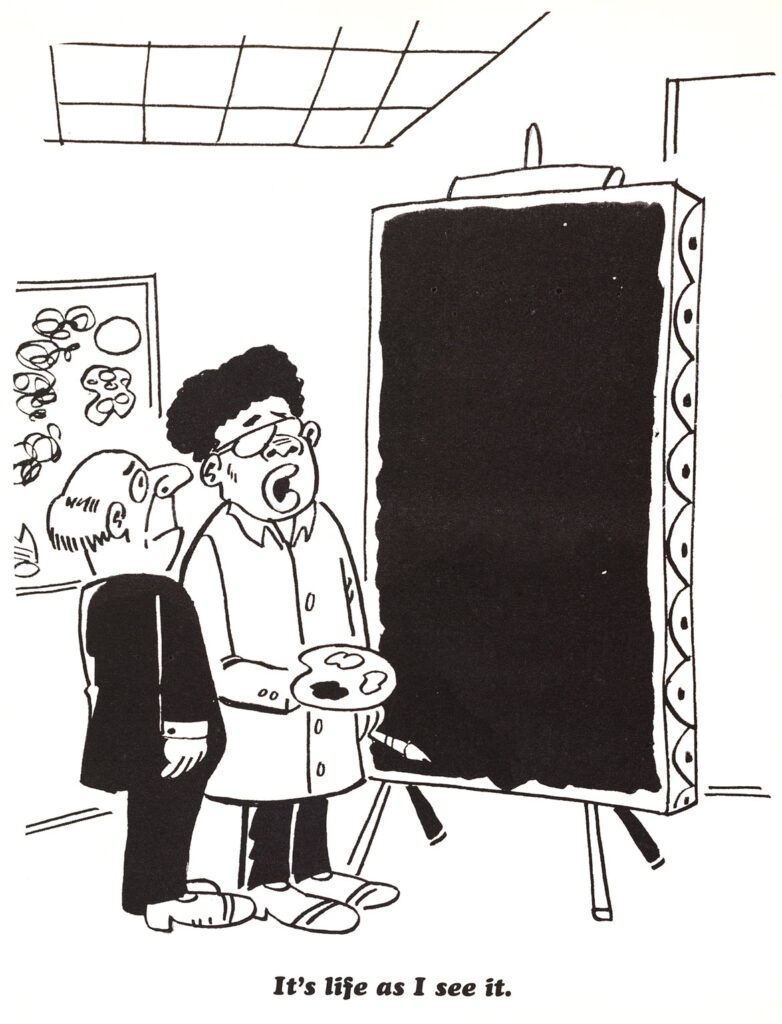
“Chuck, they don’t let Black people do that. You need to do something else,” Charles Johnson recalled his father telling him when he expressed his desire to become a gag cartoonist. But he persisted, and his first book, “Black Humor” from 1970, offered blistering jokes about race.
Tom Floyd’s 1969 book “Integration is a Bitch!” satirized his experience of being a Black man entering the white-collar workforce at Inland Steel. Sample gag: A white man tells a Black man “It will be a while before the neighbors get used to you” as a brick smashes through the window. Floyd’s 1972 comic “Blackman” featured a “Proud, Strong, and Black!” superhero who was the “soul wonder of the world.”
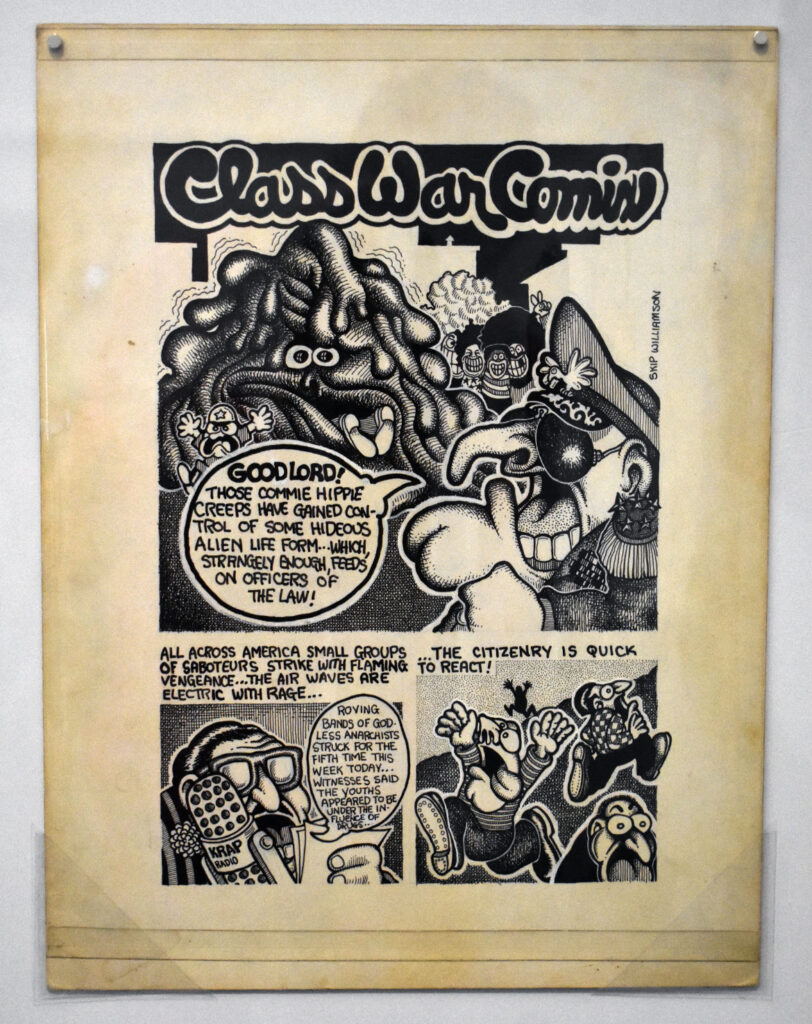
Meanwhile white artists Jay Lynch and Skip Williamson founded and published “Chicago Mirror” in 1967, with Lynch transformed into “Bijou Funnies” in 1968. Centered on drugs, sex and the activism of the era, it featured Robert Crumb and Lynch’s boyhood friend Art Spiegelman, among others. The temper of the times is also represented in a 1970 cover of the “Chicago Seed” newspaper that depicts a Chicago policeman as a pig and then Chicago Mayor Richard J. Daley’s notorious malapropism defense of Chicago police attacking protesters during the 1968 Democratic convention in the city: “The policeman is not there to create disorder, the policeman is there to preserve disorder.”
Such underground publications fostered DIY self-publishing that continued to flourish in the 1980s and ‘90s as “alternative” or “independent” comics and newspapers.
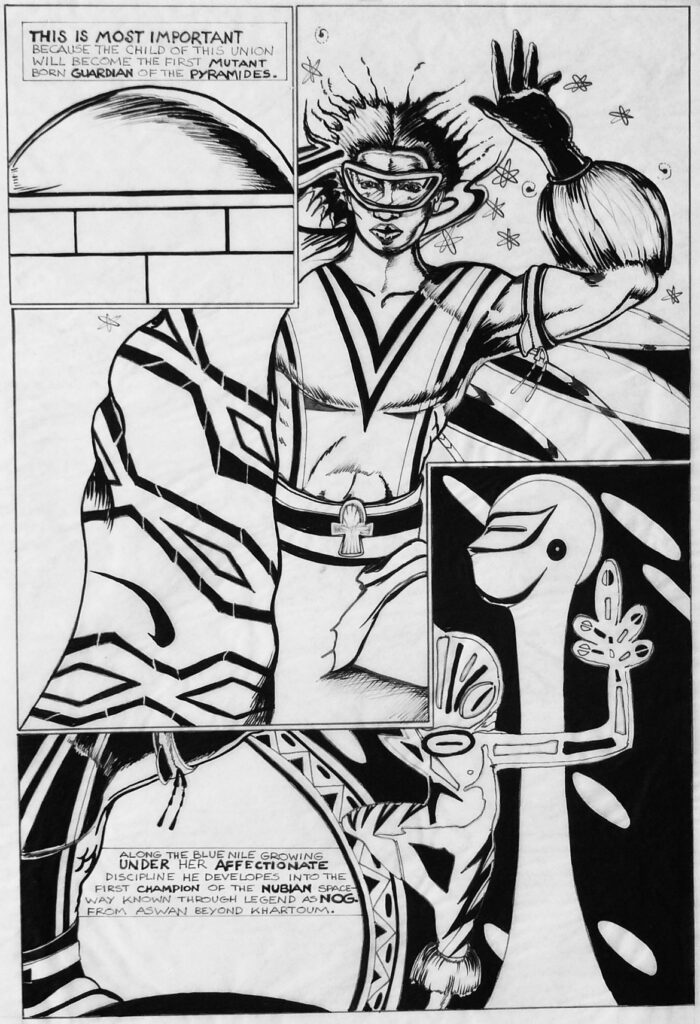
“I wanted to make sci-fi that’s based Black culture, and I made it Nubian,” said Turtel Onli, whose comic “NOG, Protector of the Pyramides” began as a strip in the Chicago Defender in 1979 and became a self-published comic book in 1981. “Let’s not talk about Egypt because we always want to take Egypt out of Africa and put it in the mideast. So let’s put it in Africa, Black Africa, and better yet, let’s give them a planet. And so now it’s a Nubian worldview, under attack.”
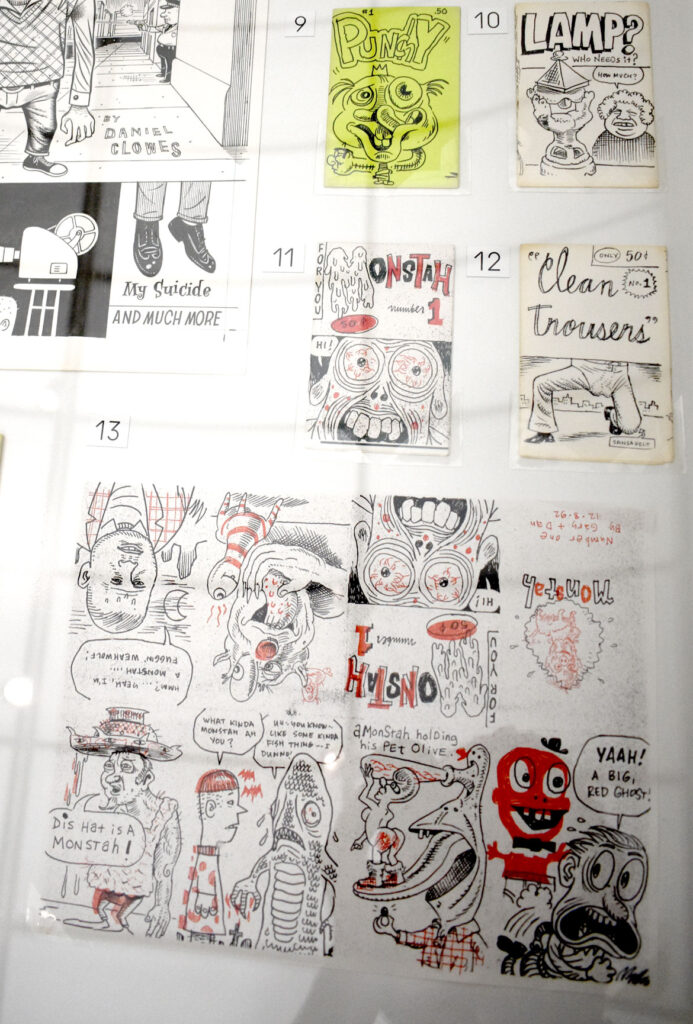
Lifelong Chicagoan Daniel Clowes and Gary Leib were the hub of a group of white cartoonists—including Chris Ware, Archer Prewitt and Terry LaBan—who would meet up at the cafe and book and music shop Earwax in Wicker Park in the late ‘80s and early ‘90s. Meanwhile Lynda Barry and John Porcellino launched sensitive comics about daily life. This period forms the hub and turning point of the show—centering around Ware and Barry, among the most influential artists of their generation.
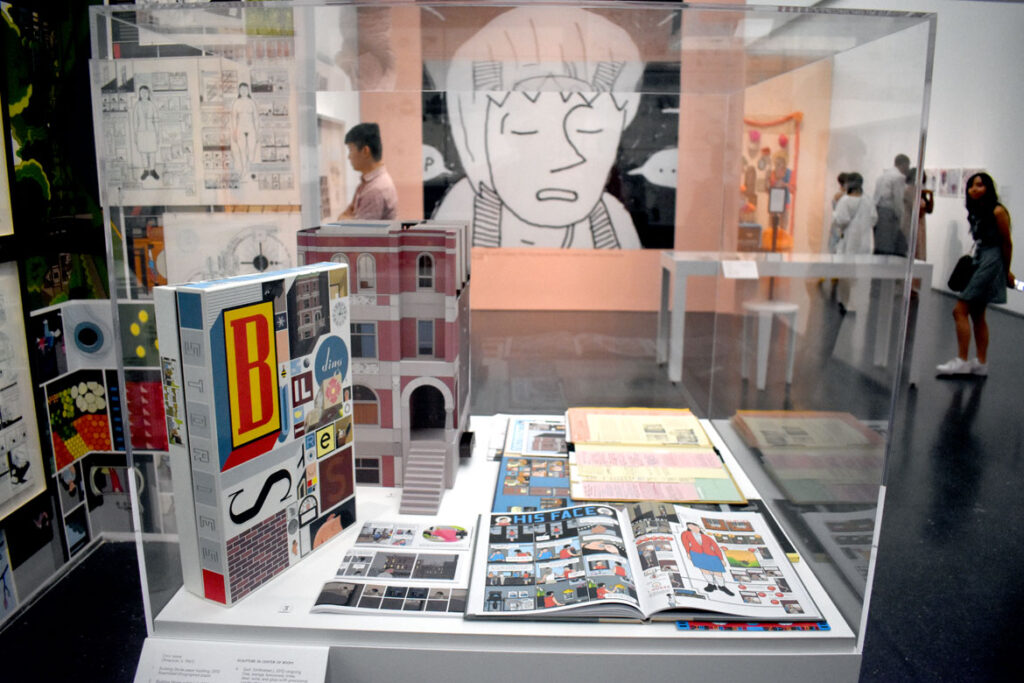
Ware arrived in Chicago for grad school at the School of the Art Institute, and his astonishing comics began appearing in weekly in local alternative papers. They were mediations on the often painful experiences of life rendered with rigorous style and elaborate compositions—rooted in both the ornate decoration of the turn of the 20th century as well as streamlined modernism. A whole gallery is devoted to his art—including three-dimensional models of his characters that he’s been making since the early days, sometimes including elaborate mechanical contraptions.
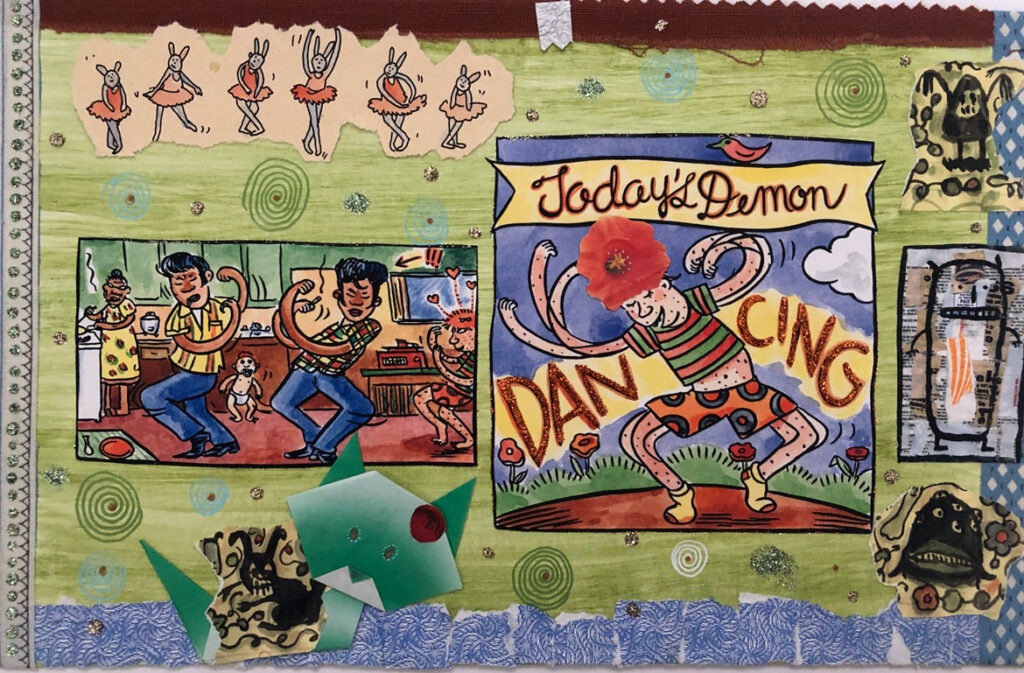
Lynda Barry and Nicole Hollander share a gallery, representing, I guess, 1980s and ‘90s feminist artists. Hollander’s nationally-syndicated strip “Sylvia,” which ran from 1980 to 2012, mixed ordinary life with critiques of sexism and hypocrisy. Barry’s tender comics about the love and pain of growing up—were inspired by growing up the child of Irish and Filipino parents. They appeared nationally in alternative newspapers when she was living in Chicago in the 1980s and ‘90s. She should have a gallery here to herself, as she’s become hugely influential through her comics, her teaching workshops and how-to books inspired by her teaching.
Celebrated fine-art painter Kerry James Marshall gets a room featuring his little known “Rhythm Mastr” comics, which he’s been drawing since 1998.
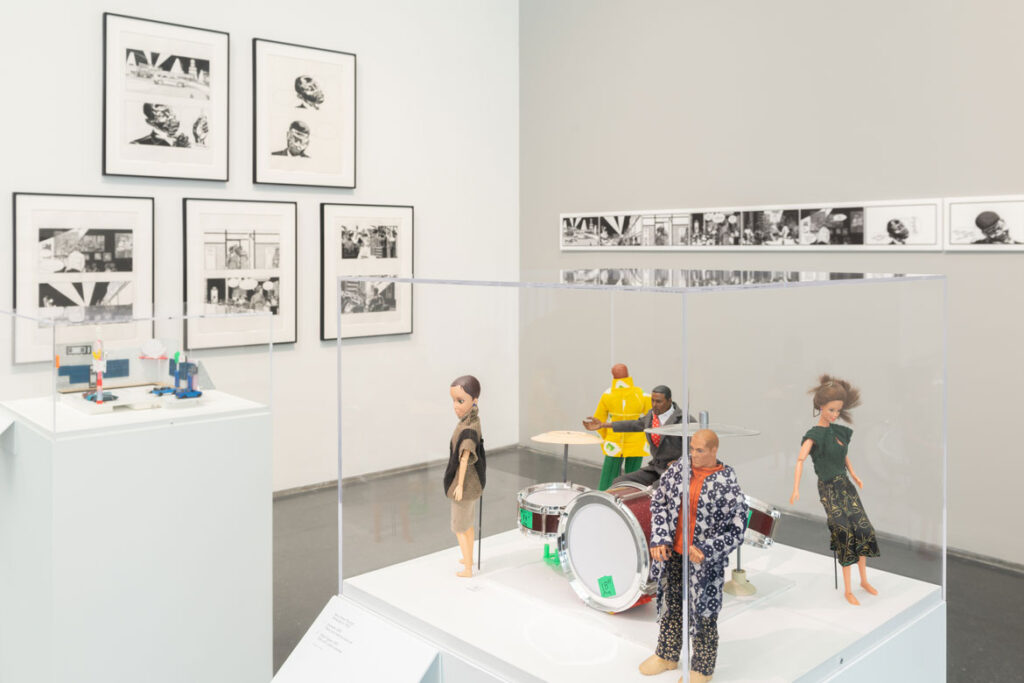
The past two decades are represented by Jessica Campbell, Lilli Carré, Ezra Clayton Daniels, Anya Davidson, Edie Fake, Margot Ferrick, Eric J. Garcia, and Gina Wynbrandt. Here are pages from Nick Drnaso’s 2018 book “Sabrina,” which was long listed for that year’s Booker Prize. It’s a bleak tale drawn in a minimalist style about a woman’s murder and the conspiracy theories it spawns.
Recent comics also showcase political and social criticism. “Chicago comics are about taking a satirical look at the harsh reality of our world,” said Eric J. Garcia, whose 2020 “El Machete Illustrated” series was a scathing critique of American government and business. “…I want viewers to come away with a more critical look at our government and the global impact it has.”
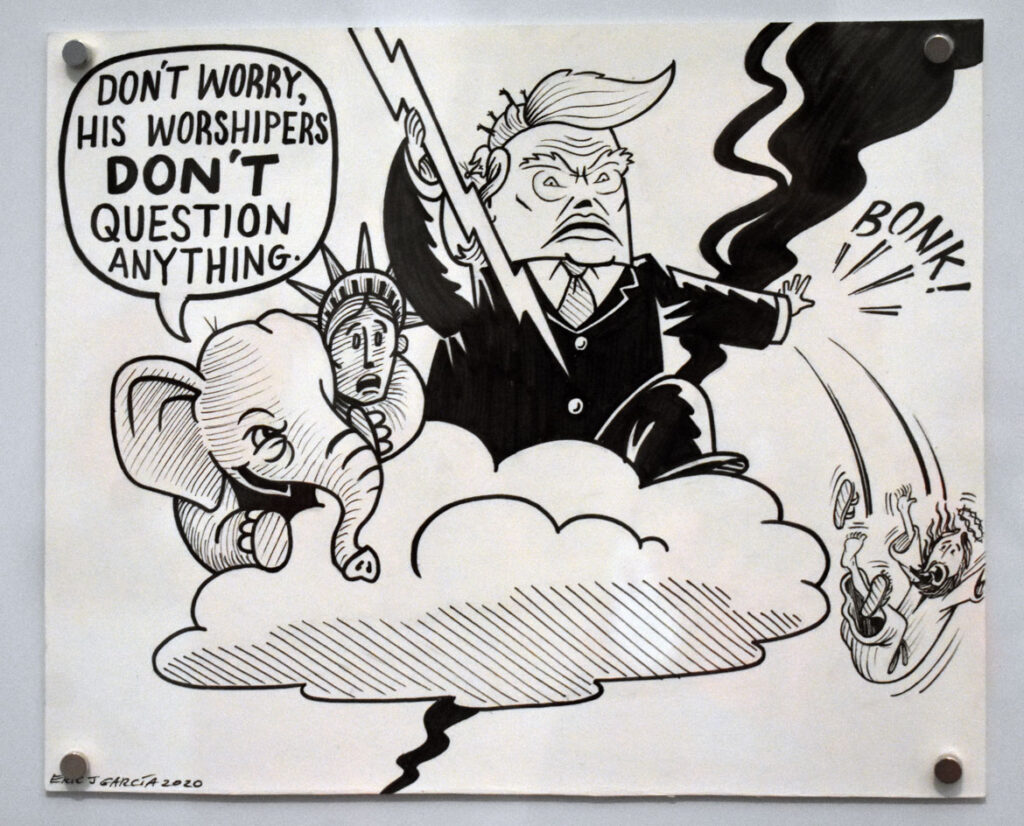
One of the last galleries features an enlargement of a July 2020 panel from Black artist Bianca Xunise from the collaborative strip “Six Chix,” which is syndicated in more than 120 newspapers nationally. A Black woman wearing an “I Can’t Breathe” shirt in reference to Minneapolis police’s murder of George Floyd and a coronavirus mask is being told by a white woman: “If you can’t breathe, them take that silly mask off.”
The comic “inspired hundreds of responses from readers and resulted a handful of newspapers dropping ‘Six Chix’ and issuing apologies for the comic,” according to the exhibition.
“I am being silenced over white feelings from a gag comic,” Xunise said at the time. “This is a complete step back in the wrong direction.”
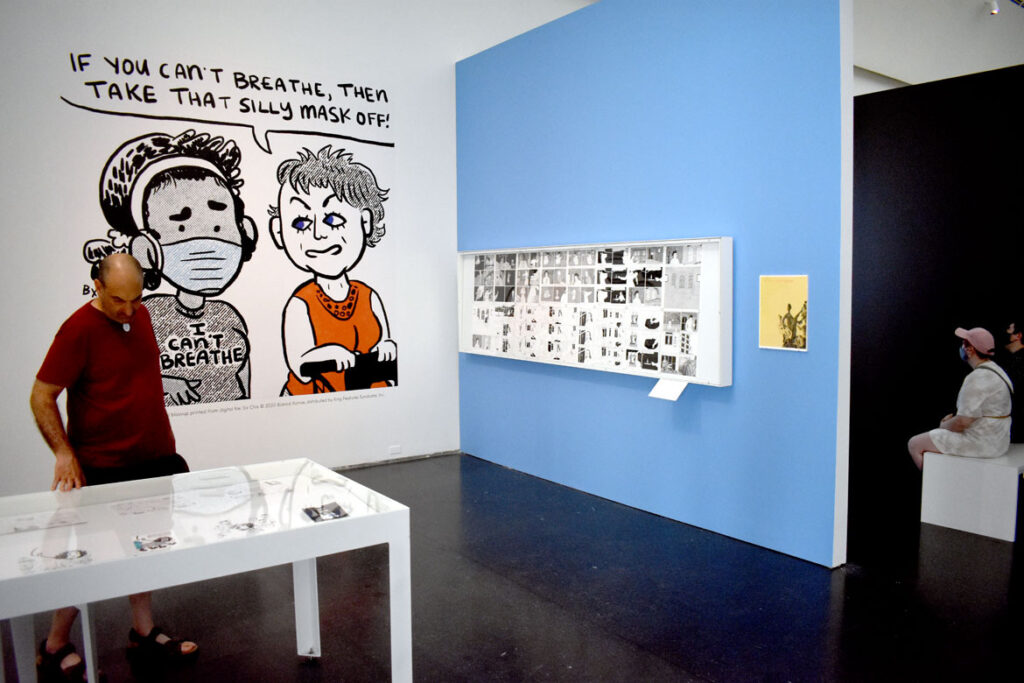
If this is the kind of coverage of arts, nature, cultures and activisms you appreciate, please support Wonderland by contributing to Wonderland on Patreon. And sign up for our free, (hopefully) weekly newsletter so that you don’t miss any of our reporting. (All content ©Greg Cook 2021 or the respective creators.)
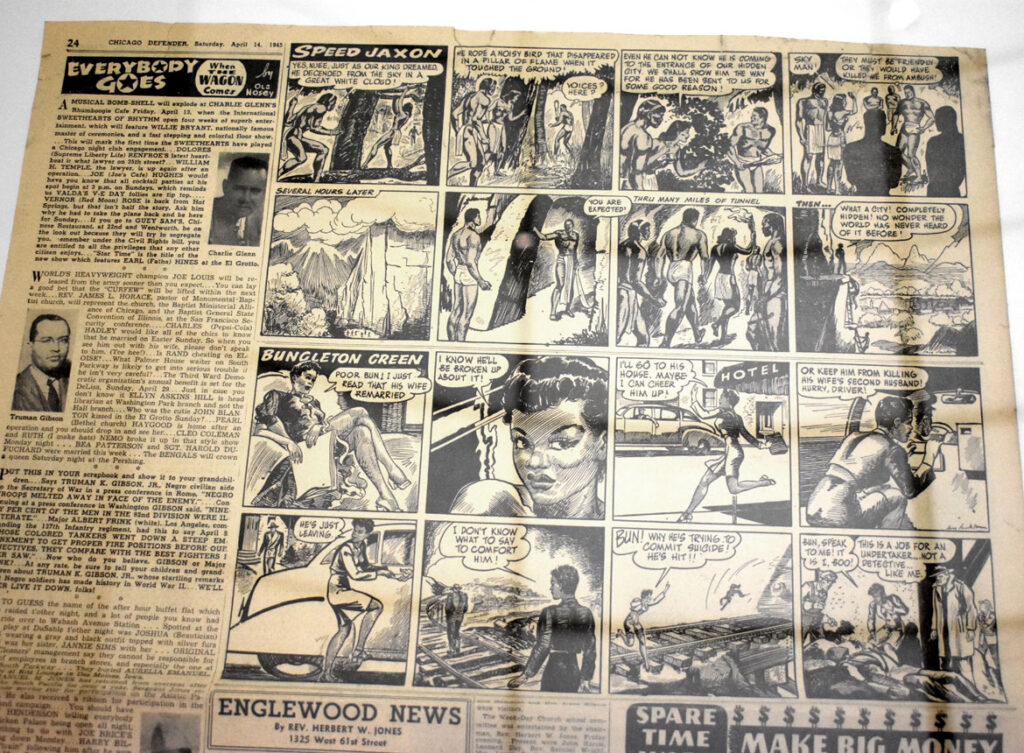

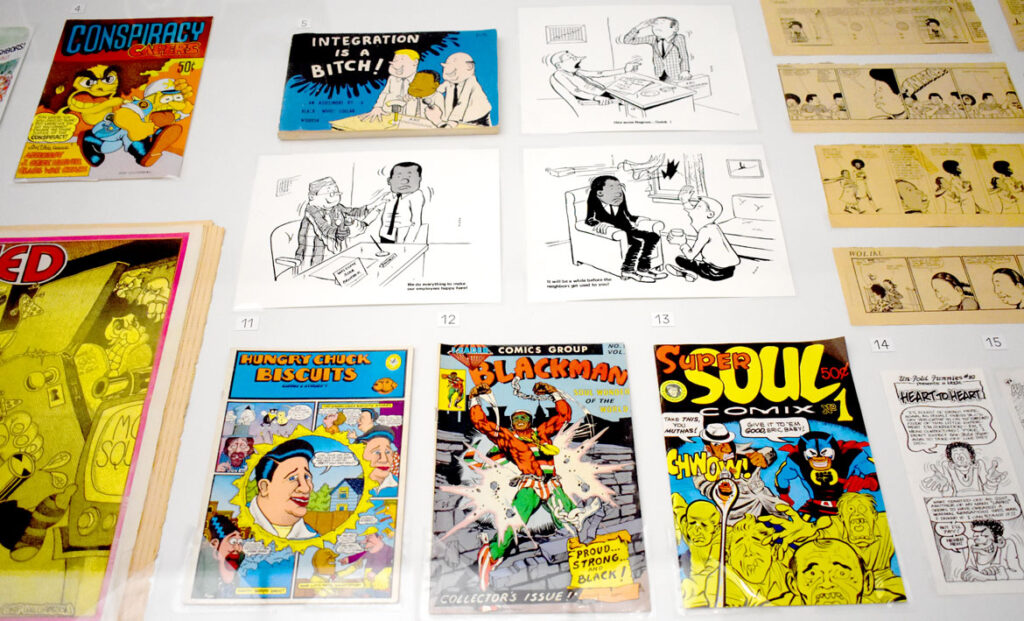

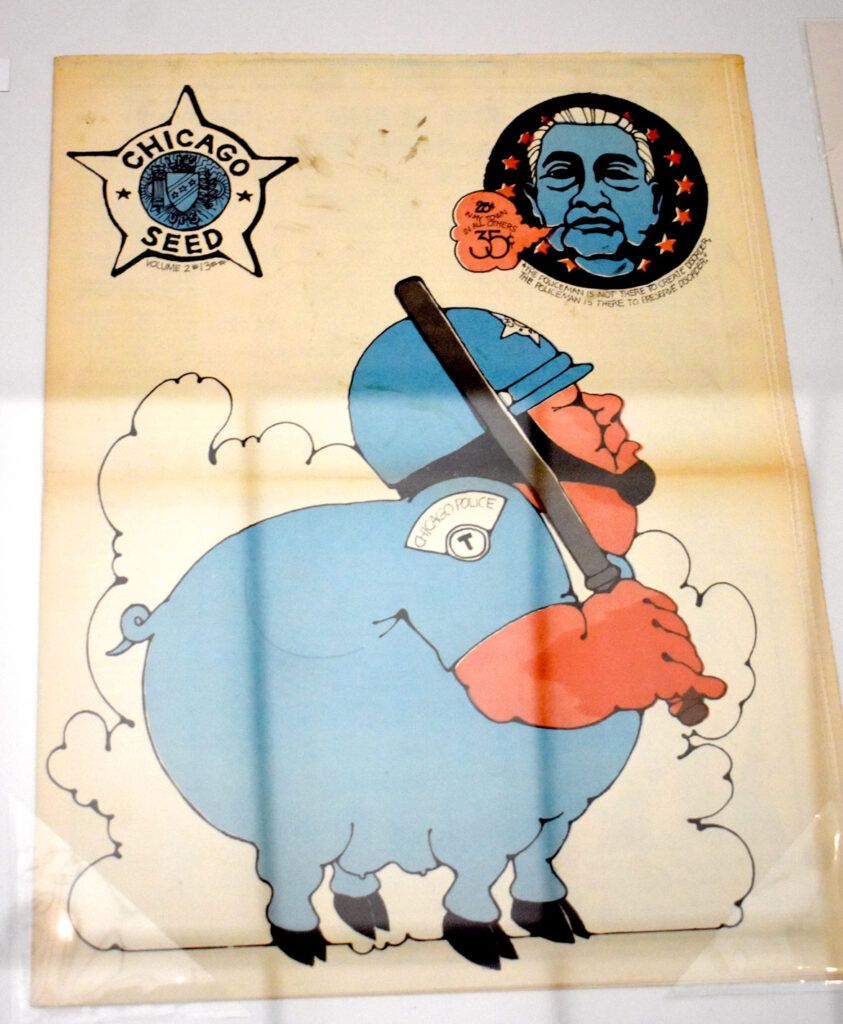
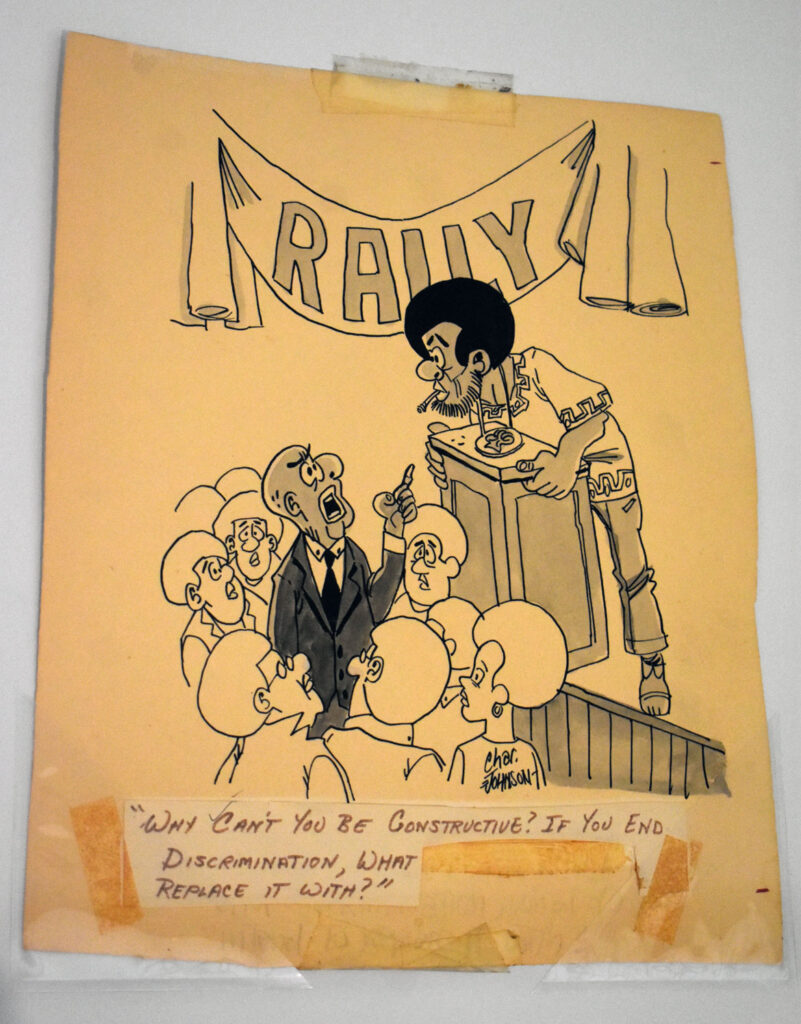
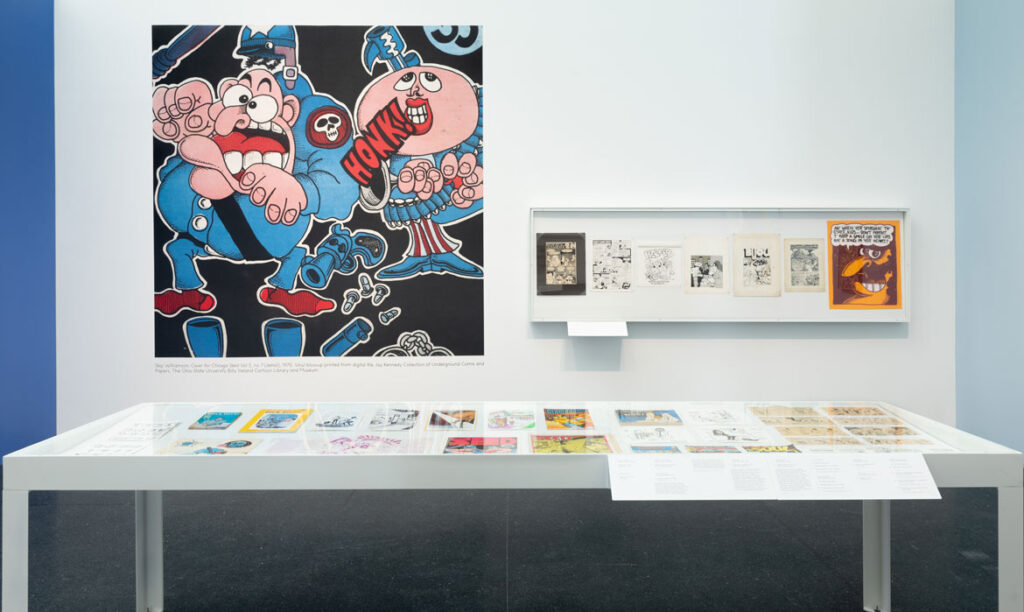
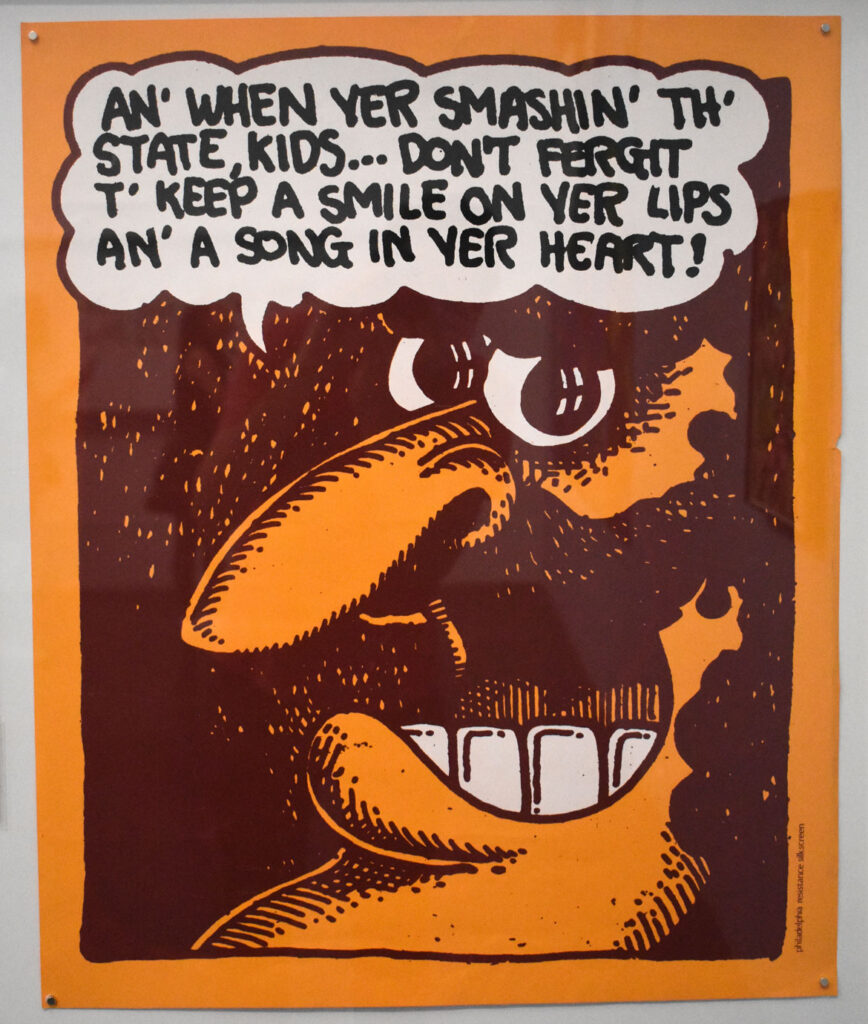
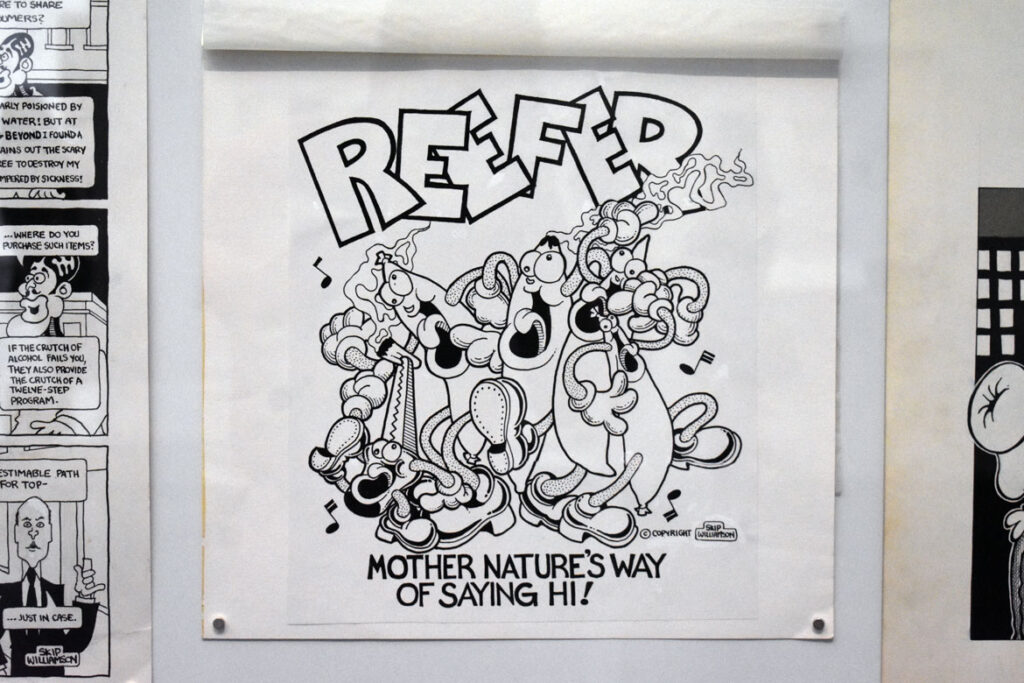


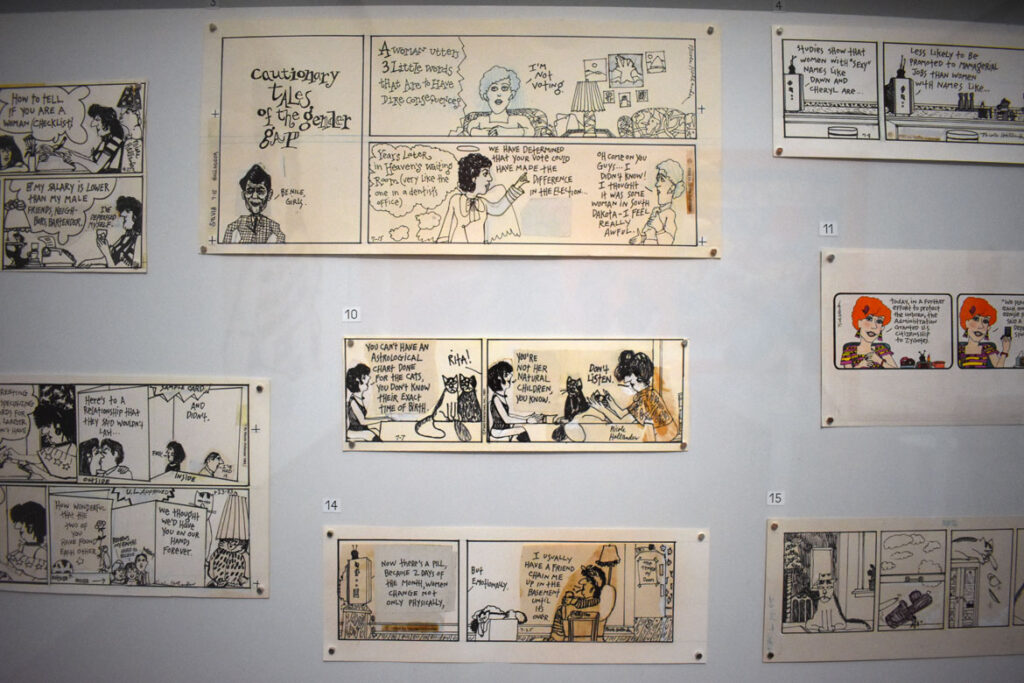
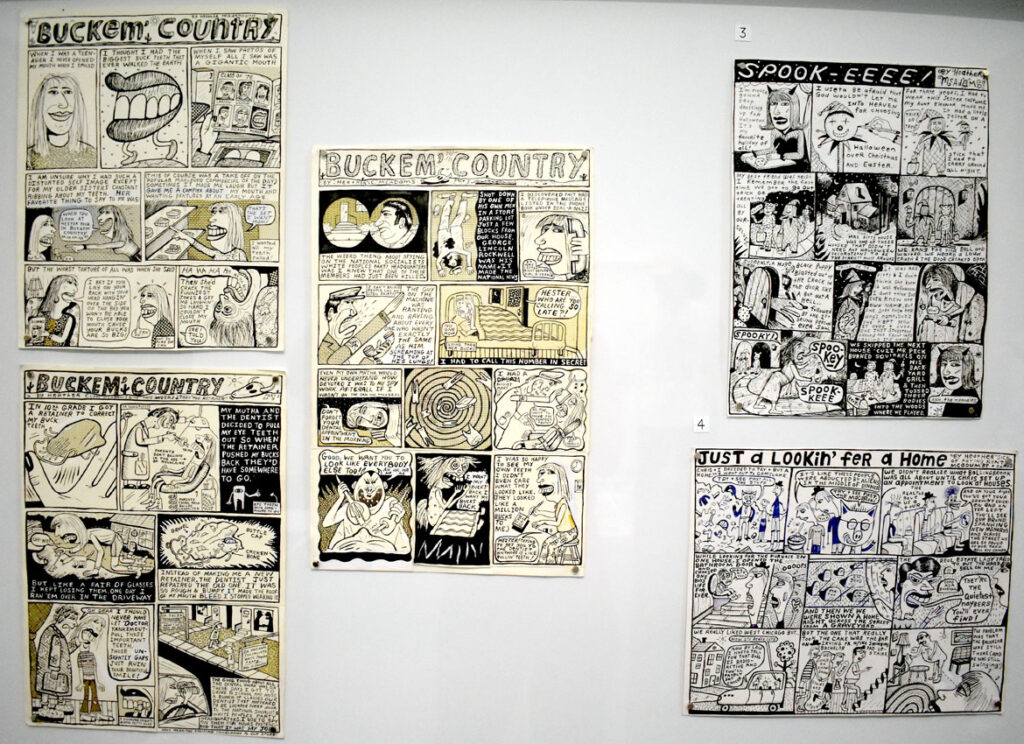
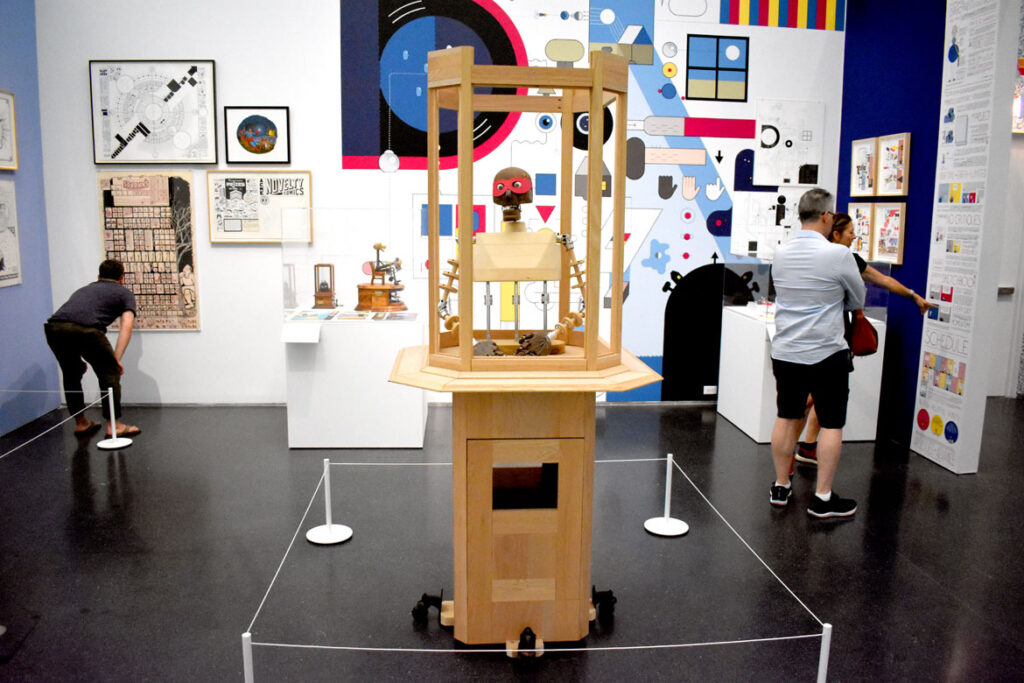
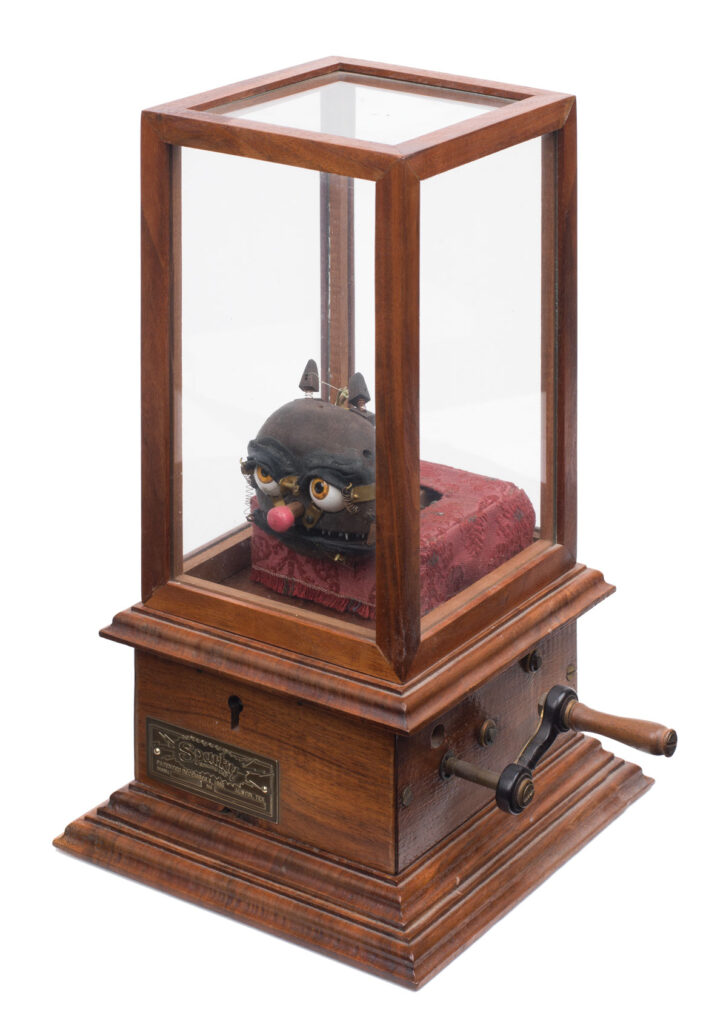


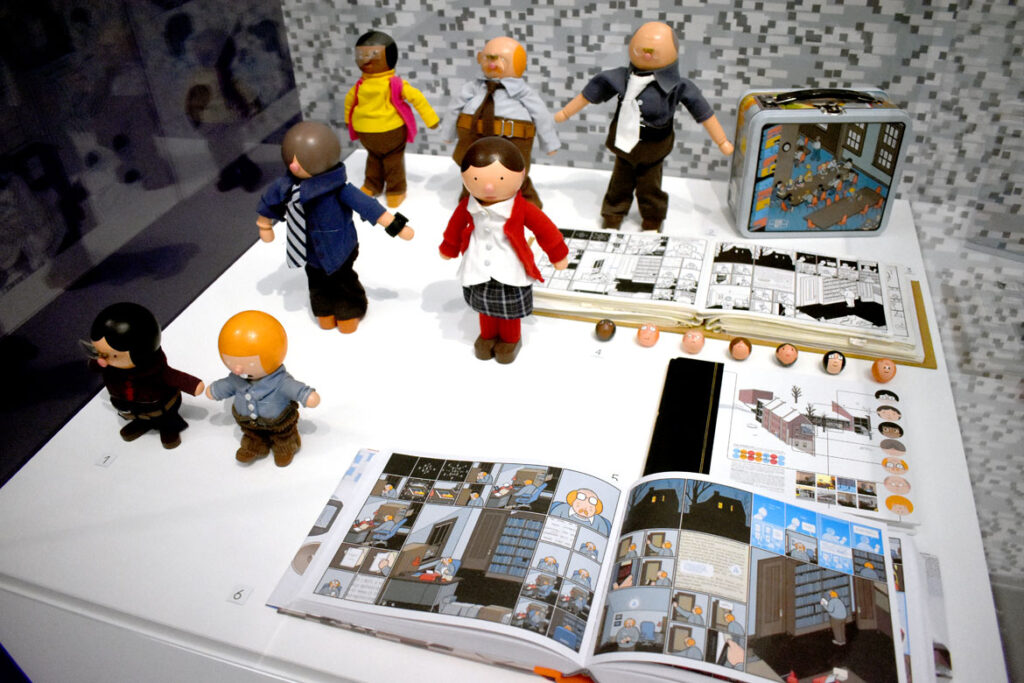
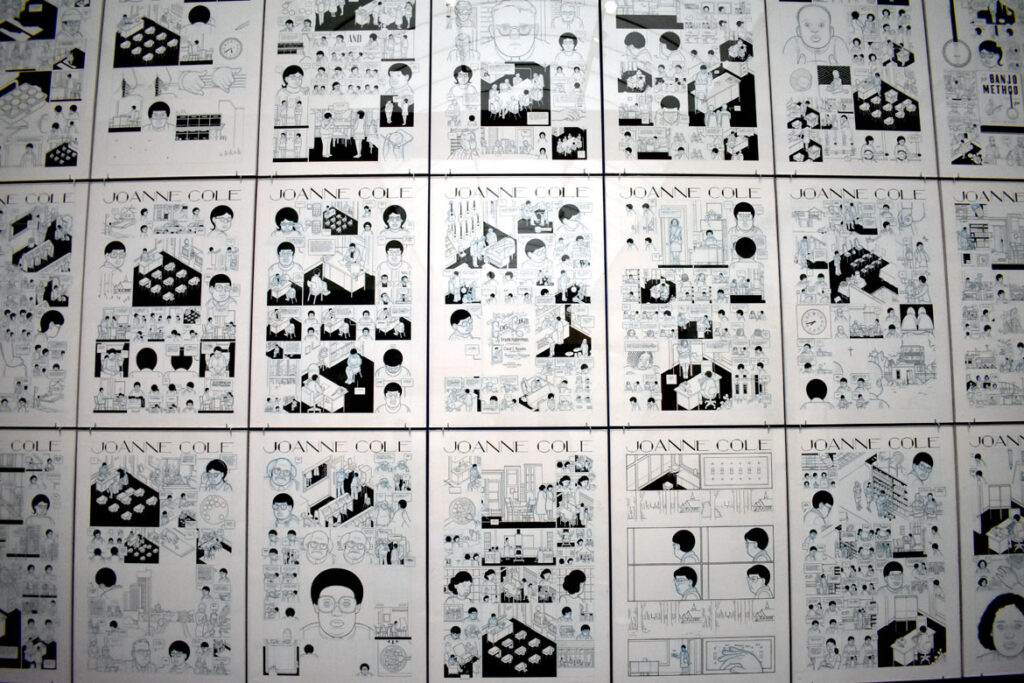

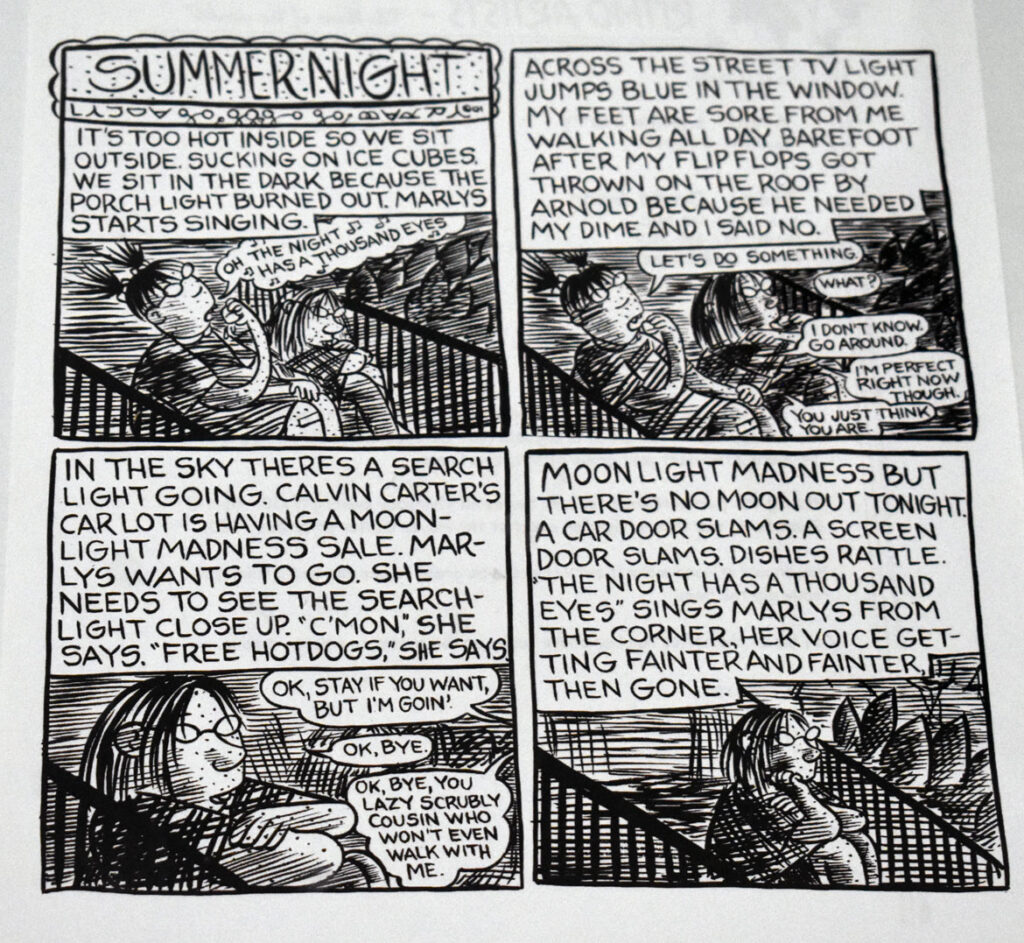


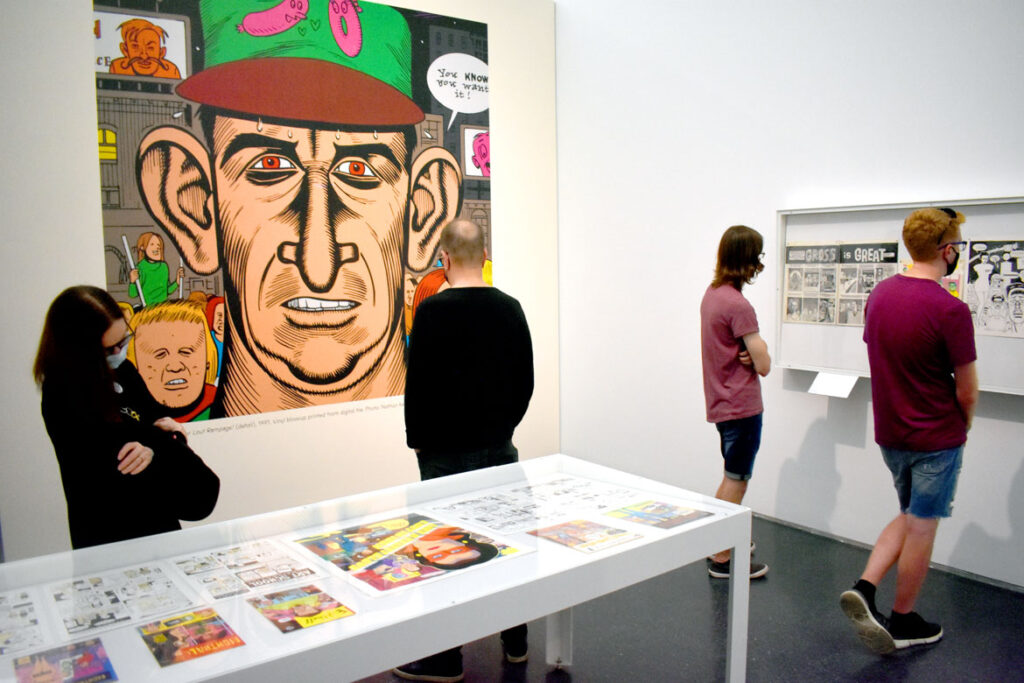
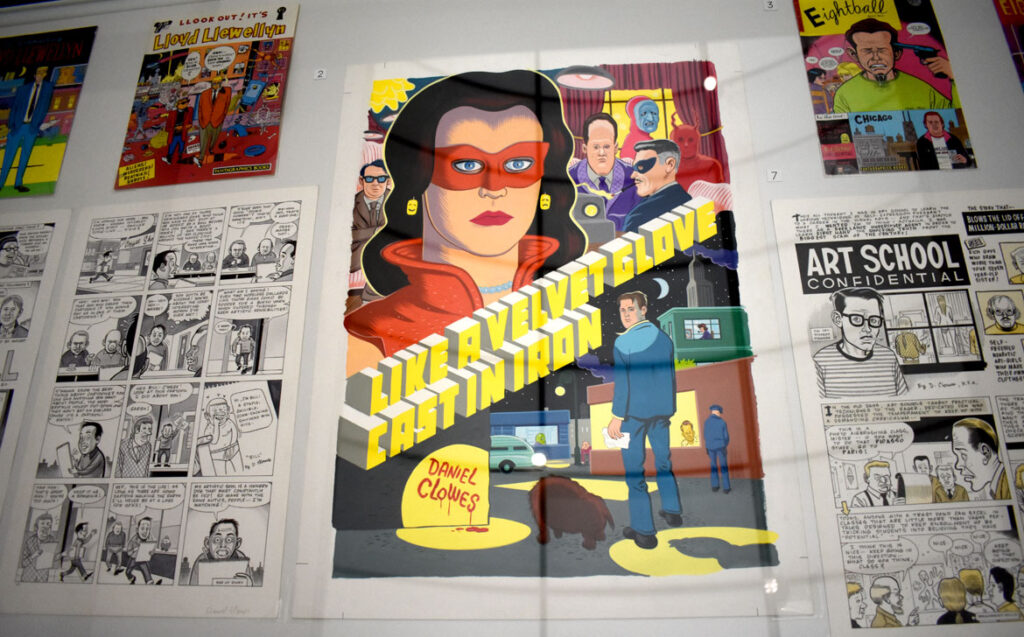
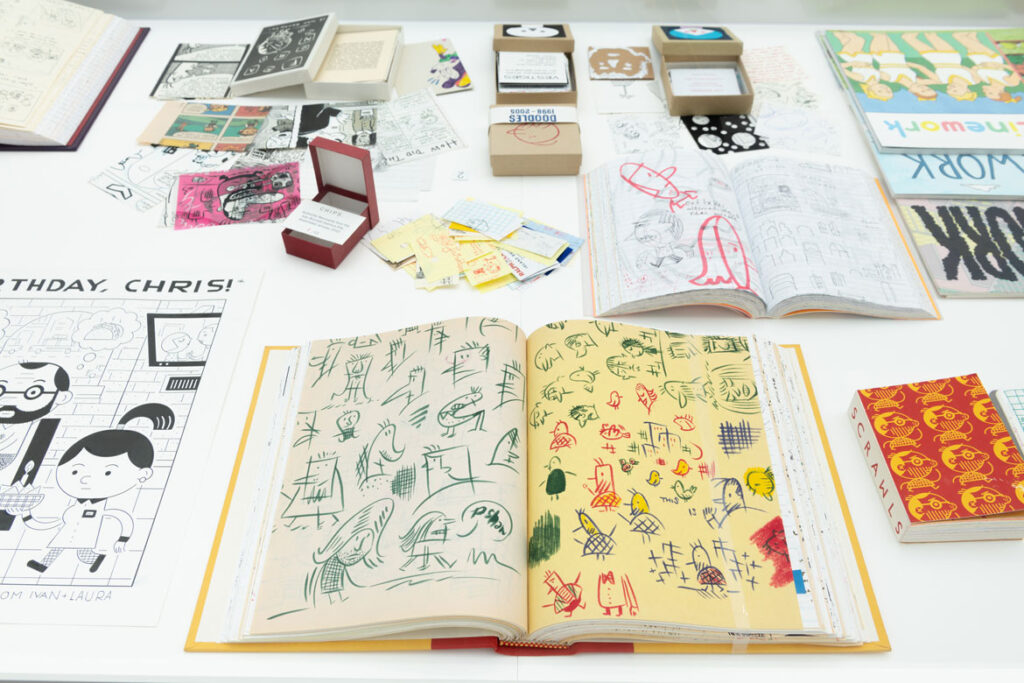
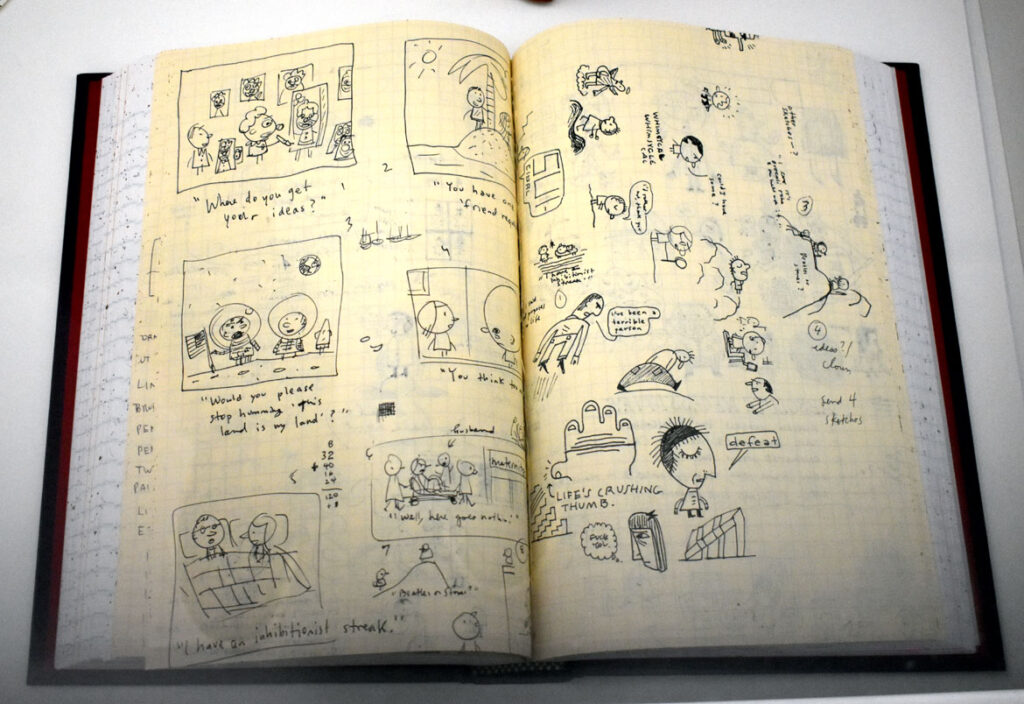
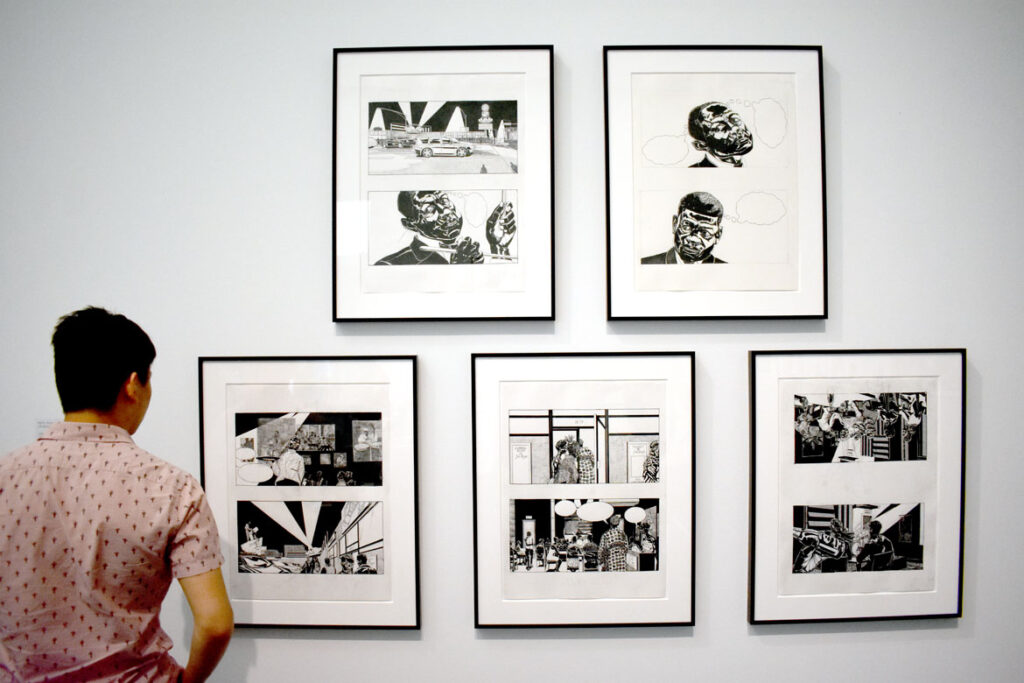
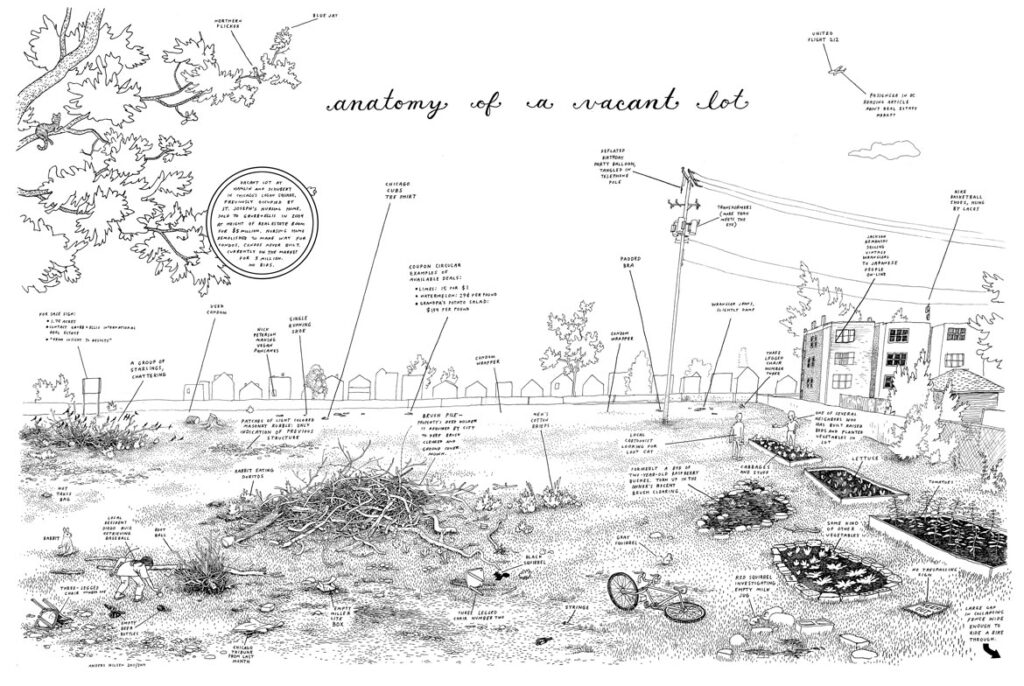
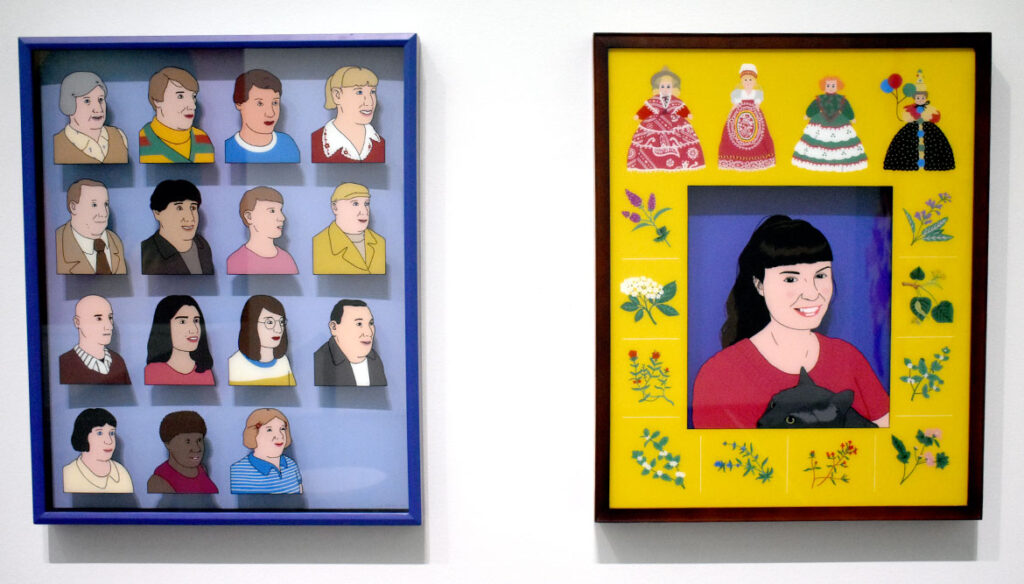
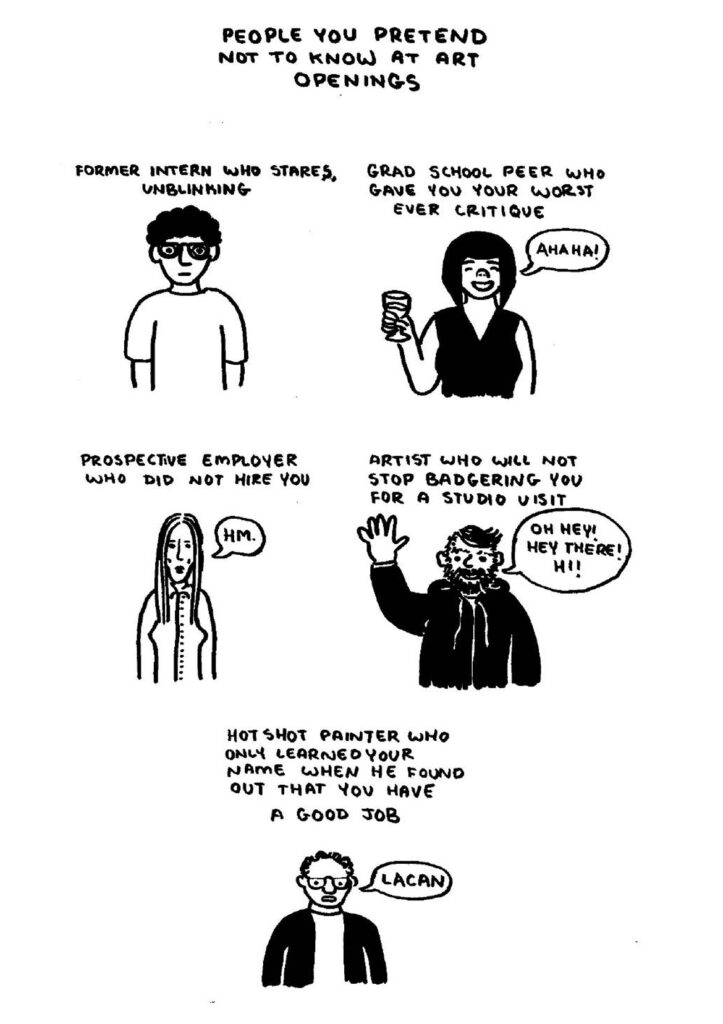
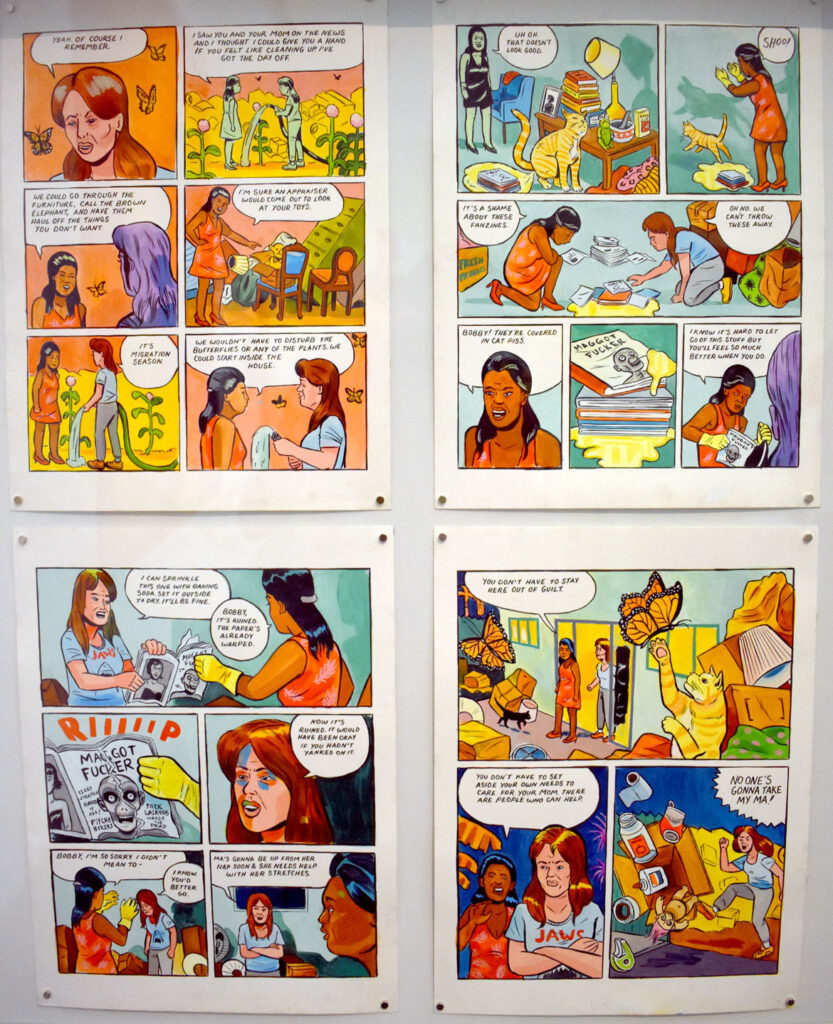
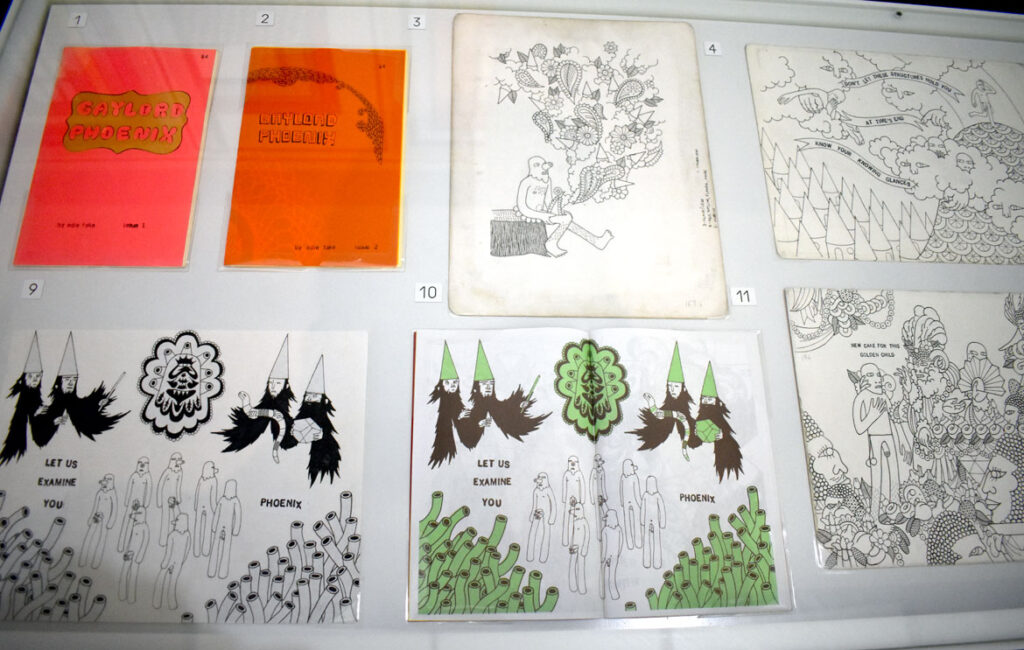
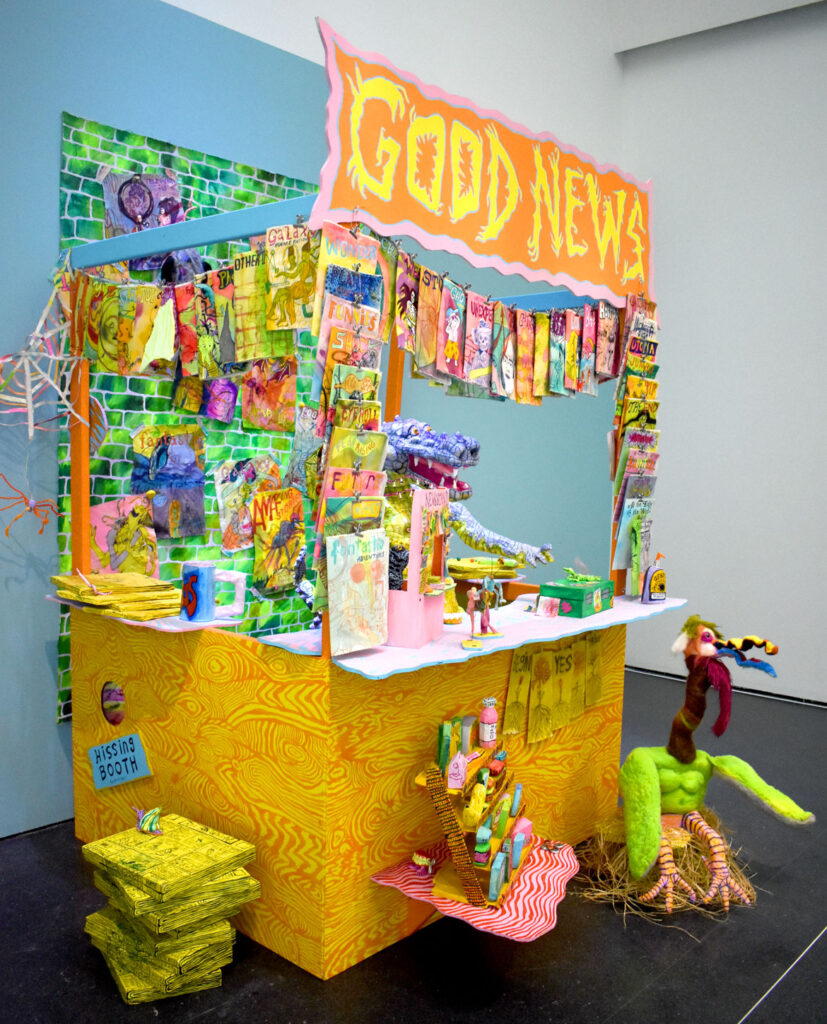
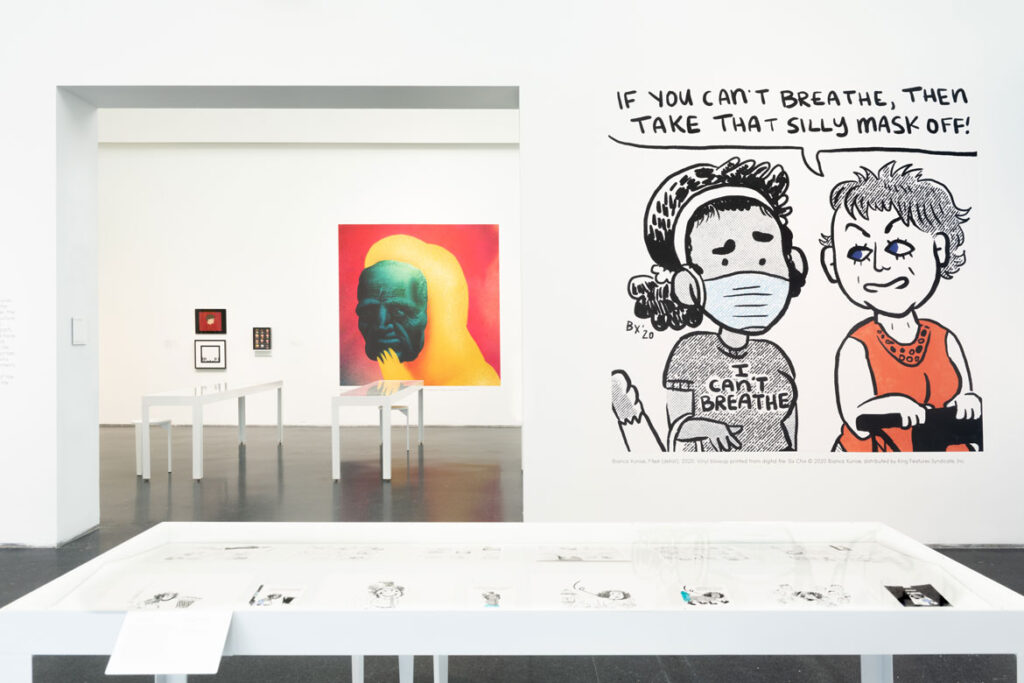
If this is the kind of coverage of arts, nature, cultures and activisms you appreciate, please support Wonderland by contributing to Wonderland on Patreon. And sign up for our free, (hopefully) weekly newsletter so that you don’t miss any of our reporting. (All content ©Greg Cook 2021 or the respective creators.)
